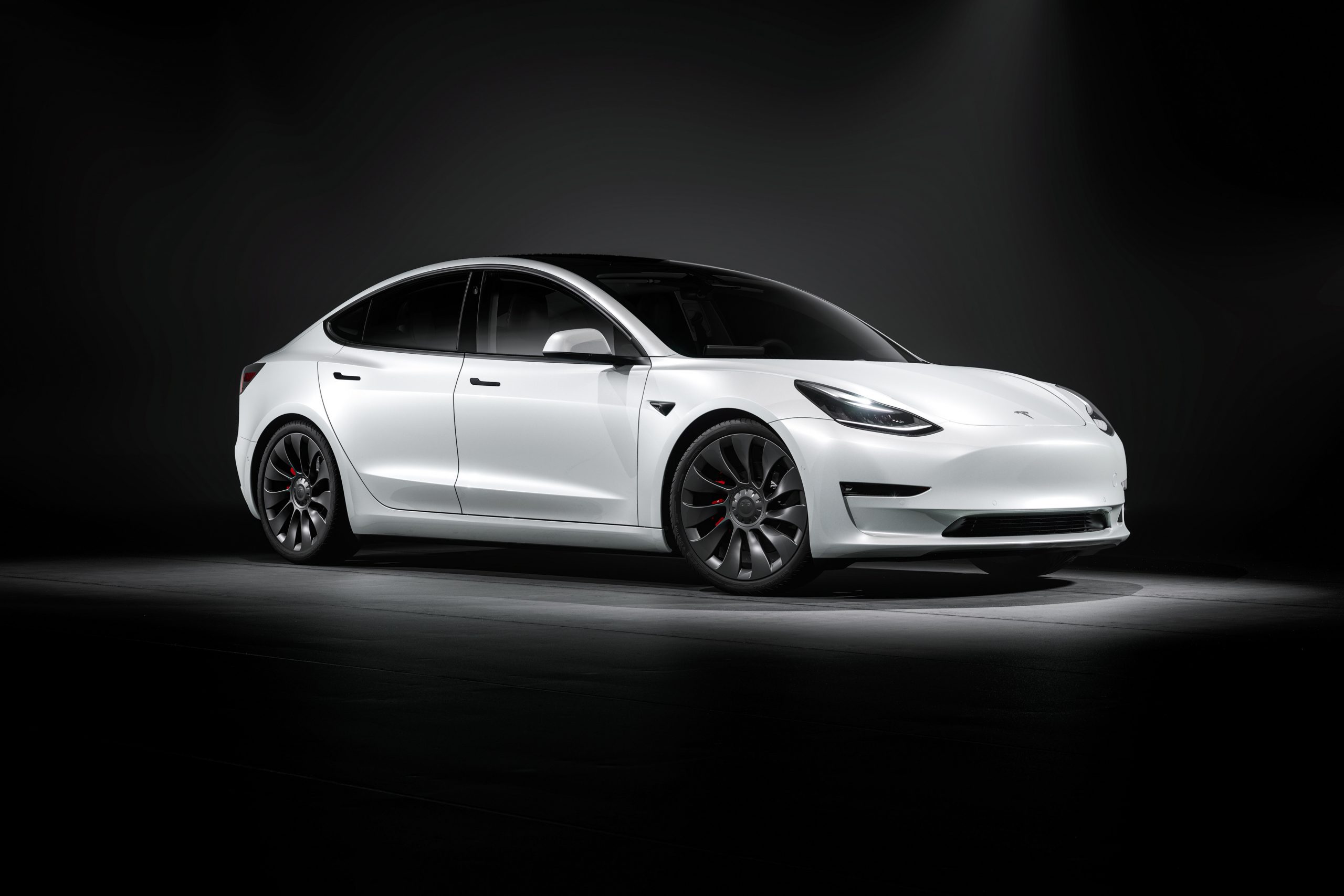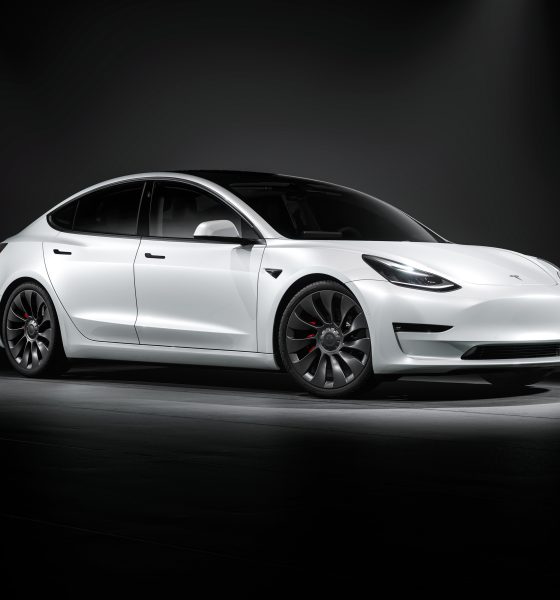

News
Tesla Model 3 is the fastest-selling EV of all-time with 24 units sold every hour
The Tesla Model 3 is the fastest-selling electric vehicle of all time, with over 24 units sold every hour, based on the vehicle’s average number of units sold every year. The Model 3 beat out some stiff competition to establish itself as the fastest-selling EV in the world, including the Model Y, which has overtaken the Model 3 as Tesla’s best-selling vehicle.
A new study from LeaseLoco worked out which vehicles can claim to be the fastest and best-selling cars on Earth. Electric vehicles, while relatively new to the automotive sector on a mass-market scale, are becoming more mainstream every day. Tesla is without a doubt the most popular EV brand on Earth, and although the automaker has not yet reached the scalability or output of the world’s largest car companies, it is well on its way. If the figures obtained by LeaseLoco are any indication of what is in store for Tesla, the automotive sector can expect a new dominating force in the world of vehicles. It won’t be Ford, it won’t be Volkswagen, it won’t be GM, it will be Tesla.
Tesla sells about 24.5 Model 3 units every hour, according to the data. On average, Tesla has sold 215,000 Model 3s per year, slowly but surely increasing manufacturing numbers on almost a monthly basis. That number will, without a doubt, increase by the time 2021 comes to a close, as Tesla is on pace to sell nearly 900,000 cars in 2021, with about half being Model 3s.
Credit: LeaseLoco
Fending off stiff but familiar competition, the Model 3 still outsells the Wuling HongGuang Mini EV from China, which is extremely affordable but lacks even the most basic features, like power windows, for example. Nevertheless, the HongGuang Mini EV is still a reputable vehicle due to its sales record. 125,925 units sold on average, equating to about 14.4 units sold every hour. The vehicle is a part of a joint partnership from General Motors-SAIC-Wuling in China.
The Model 3 was not the only vehicle Tesla had on the list, either. The Model Y, despite only being about 18 months into its lifespan as a Tesla vehicle, captured third on the list with 100,000 average units sold per year, equating to 11.4 units sold every hour. Pretty impressive for a relatively new car and Tesla’s first attempt at a crossover.
Compared to gas vehicles, the Model 3 is the 30th fastest-selling car of all time. The car with the best sales per hour rate of all-time is the Nissan Sentra, selling 182 cars per hour or 3.03 every minute.
Don’t hesitate to contact us with tips! Email us at tips@teslarati.com, or you can email me directly at joey@teslarati.com.

Elon Musk
Starlink achieves major milestones in 2025 progress report
Starlink wrapped up 2025 with impressive growth, adding more than 4.6 million new active customers and expanding service to 35 additional countries, territories, and markets.

Starlink wrapped up 2025 with impressive growth, adding more than 4.6 million new active customers and expanding service to 35 additional countries, territories, and markets. The company also completed deployment of its first-generation Direct to Cell constellation, launching over 650 satellites in just 18 months to enable cellular connectivity.
SpaceX highlighted Starlink’s impressive 2025 progress in an extensive report.
Key achievements from Starlink’s 2025 Progress
Starlink connected over 4.6 million new customers with high-speed internet while bringing service to 35 more regions worldwide in 2025. Starlink is now connecting 9.2 million people worldwide. The service achieved this just weeks after hitting its 8 million customer milestone.
Starlink is now available in 155 markets, including areas that are unreachable by traditional ISPs. As per SpaceX, Starlink has also provided over 21 million airline passengers and 20 million cruise passengers with reliable high-speed internet connectivity during their travels.
Starlink Direct to Cell
Starlink’s Direct to Cell constellation, more than 650 satellites strong, has already connected over 12 million people at least once, marking a breakthrough in global mobile coverage.
Starlink Direct to Cell is currently rolled out to 22 countries and 6 continents, with over 6 million monthly customers. Starlink Direct to Cell also has 27 MNO partners to date.
“This year, SpaceX completed deployment of the first generation of the Starlink Direct to Cell constellation, with more than 650 satellites launched to low-Earth orbit in just 18 months. Starlink Direct to Cell has connected more than 12 million people, and counting, at least once, providing life-saving connectivity when people need it most,” SpaceX wrote.
News
Tesla Giga Nevada celebrates production of 6 millionth drive unit
To celebrate the milestone, the Giga Nevada team gathered for a celebratory group photo.

Tesla’s Giga Nevada has reached an impressive milestone, producing its 6 millionth drive unit as 2925 came to a close.
To celebrate the milestone, the Giga Nevada team gathered for a celebratory group photo.
6 million drive units
The achievement was shared by the official Tesla Manufacturing account on social media platform X. “Congratulations to the Giga Nevada team for producing their 6 millionth Drive Unit!” Tesla wrote.
The photo showed numerous factory workers assembled on the production floor, proudly holding golden balloons that spelled out “6000000″ in front of drive unit assembly stations. Elon Musk gave credit to the Giga Nevada team, writing, “Congrats on 6M drive units!” in a post on X.
Giga Nevada’s essential role
Giga Nevada produces drive units, battery packs, and energy products. The facility has been a cornerstone of Tesla’s scaling since opening, and it was the crucial facility that ultimately enabled Tesla to ramp the Model 3 and Model Y. Even today, it serves as Tesla’s core hub for battery and drivetrain components for vehicles that are produced in the United States.
Giga Nevada is expected to support Tesla’s ambitious 2026 targets, including the launch of vehicles like the Tesla Semi and the Cybercab. Tesla will have a very busy 2026, and based on Giga Nevada’s activities so far, it appears that the facility will be equally busy as well.
News
Tesla Supercharger network delivers record 6.7 TWh in 2025
The network now exceeds 75,000 stalls globally, and it supports even non-Tesla vehicles across several key markets.

Tesla’s Supercharger Network had its biggest year ever in 2025, delivering a record 6.7 TWh of electricity to vehicles worldwide.
To celebrate its busy year, the official @TeslaCharging account shared an infographic showing the Supercharger Network’s growth from near-zero in 2012 to this year’s impressive milestone.
Record 6.7 TWh delivered in 2025
The bar chart shows steady Supercharger energy delivery increases since 2012. Based on the graphic, the Supercharger Network started small in the mid-2010s and accelerated sharply after 2019, when the Model 3 was going mainstream.
Each year from 2020 onward showed significantly more energy delivery, with 2025’s four quarters combining for the highest total yet at 6.7 TWh.
This energy powered millions of charging sessions across Tesla’s growing fleet of vehicles worldwide. The network now exceeds 75,000 stalls globally, and it supports even non-Tesla vehicles across several key markets. This makes the Supercharger Network loved not just by Tesla owners but EV drivers as a whole.
Resilience after Supercharger team changes
2025’s record energy delivery comes despite earlier 2024 layoffs on the Supercharger team, which sparked concerns about the system’s expansion pace. Max de Zegher, Tesla Director of Charging North America, also highlighted that “Outside China, Superchargers delivered more energy than all other fast chargers combined.”
Longtime Tesla owner and FSD tester Whole Mars Catalog noted the achievement as proof of continued momentum post-layoffs. At the time of the Supercharger team’s layoffs in 2024, numerous critics were claiming that Elon Musk was halting the network’s expansion altogether, and that the team only remained because the adults in the room convinced the juvenile CEO to relent.
Such a scenario, at least based on the graphic posted by the Tesla Charging team on X, seems highly implausible.








